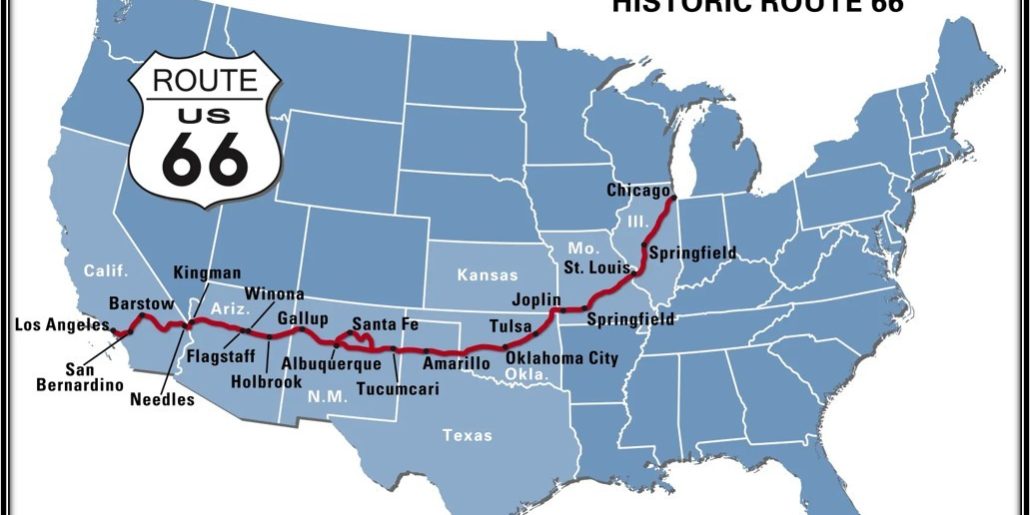James Dean and Historic Route 66
Contributor: Barry Fetzer
Sources: Members.tripod.com, Encyclopedia Britannica, Copilot AI
Those of us younger than 70 might not know much of actor James Dean, nor much about the “Mother Road”, Route 66. And, I doubt they will remember watching the iconic TV show, “Route 66” that helped make the road so famous.
“What,” you rightfully ask, “does James Dean and Route 66 (fact or TV fable) have to do with aviation?”
Well, actually not (pardon my language) a hell of a lot. But when I noted that in 1955 (nearly three years after my birth) and 70 years ago today being the anniversary of James Dean’s death (killed in a car crash on Route 66), it got my crazy brain to thinking, “I wonder what defunct airports exist along the “Mother Road?” Now THAT has something to do with aviation!
But first, in honor of James Dean’s untimely death, let’s look at the “Mother Road” for a few moments. Ever been on Route 66? I have, on stretches of its remnants in Texas, Oklahoma, New Mexico, and Arizona. Some stretches of the road are busy and touristy as the one pictured, below at the National Route 66 Museum in Oklahoma. Other stretches are lonely and abandoned such as that depicted of a weathered, former (all gone except the sign) motel along a New Mexico stretch of the “Mother Road”.
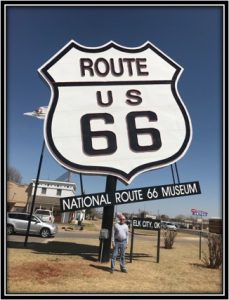
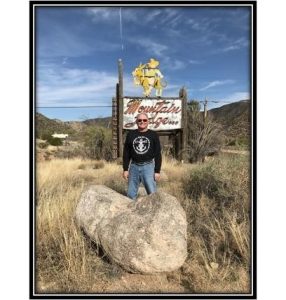
Fetzer Family photos.
According to the Federal Highway Administration, “John Steinbeck proclaimed Route 66 the ‘Mother Road’ in his 1939 book The Grapes of Wrath (highlighting according to AI’s Copilot its role as a lifeline for families fleeing the Dust Bowl during the Great Depression). Like Route 40 and the National Road, Route 66 has shared the title ‘The Main Street of America’. With all this attention plus the popularity of the automobile, the filling stations were built with clear association to particular petroleum companies. Restaurants, souvenir shops and auto camps sprung up. Landmarks of all kinds were built and the road was at its peak of popularity. Post-Depression and post-World War II families, equipped with jobs, money and an automobile, planned cross-country road trips via Route 66 to see all the sites.”
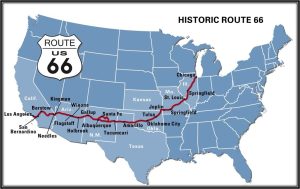
Courtesy of Encyclopedia Britannica.
But back to the matter at hand: Defunct airports along the Mother Road. So, let’s go to AI’s Copilot again and ask. Here is its answer.
“It’s important to note that while many airfields were built near Route 66, their operation dates and direct connection to the road’s primary function varied. Some, like Winslow, were directly integrated into the early air travel experience of the era, while others, like the military fields at Kingman and Manzanar, served more specific wartime purposes.
“Defunct airports that operated along or in close proximity to Route 66 include the Stinson Airport in Illinois, Kingman Army Air Field (now Kingman Municipal Airport) in Arizona, and Winslow Airport in Arizona, which historically served as a critical stop on the first transcontinental air passenger line. Other less defined airfields, such as the Manzanar Airfield in California and a former airport in Gallup, New Mexico, also existed in the general Route 66 corridor but were not as significant to the road’s direct passenger transit.
Here are some specific examples of defunct or historically significant airports along the Route 66 path:
Stinson Airport (Illinois): This small municipal airport operated from the early 1920s until 1958 and was located near the route in the Chicago area.
Kingman Army Air Field (KAAF) (Arizona): Built in 1942, KAAF was a vital aerial gunnery training base for B-17 bombers during World War II. After the war, its vast runways were used for storing surplus aircraft before it became the Kingman Municipal Airport.
Winslow Airport (Arizona): Established in 1929 by Transcontinental Air Transport (TAT), with Charles Lindbergh as a key figure, Winslow was one of twelve critical stops on America’s first transcontinental passenger air service. The original hangar still stands at the airport, which continues to operate as a busy airfield, though its airline service ceased decades ago.
Manzanar Airfield (California): Also known as the Inyo County Airport, this field was built in the early 1940s for bomber pilot training and possibly as a ‘fallback field’ for the West Coast (defensive operations should we be attached and overcome) during World War II.”
The below downloaded from https://members.tripod.com/airfields_freeman/IL/Airfields_IL_Chicago_W.htm today, let’s take a closer look at Stinson airport (just outside Chicago):
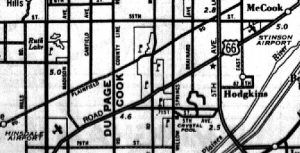
Stinson Airport, as depicted on a 1947 street atlas.
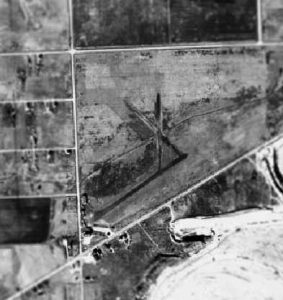
A November 1938 aerial photo (courtesy of Bruce Lathrop) depicting Stinson Airport (just north of Route 66) as having 3 grass runways, with a few small buildings at the southwest corner of the field. Stinson is now a quarry.
So just like the “Mother Road”, airports along its route came and went and, in many cases, changed and improved…or went quiet. Time moves on. James Dean moved on. Just like Route 66.
Onward and upward!
Sources: Members.tripod.com, Encyclopedia Britannica, Copilot AI

